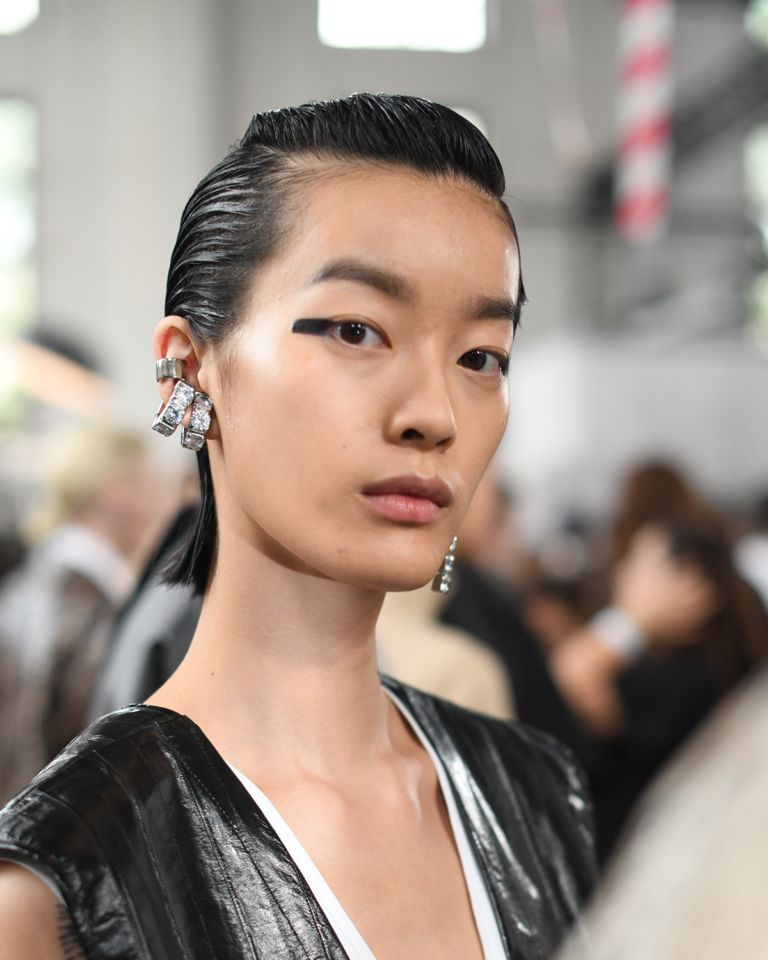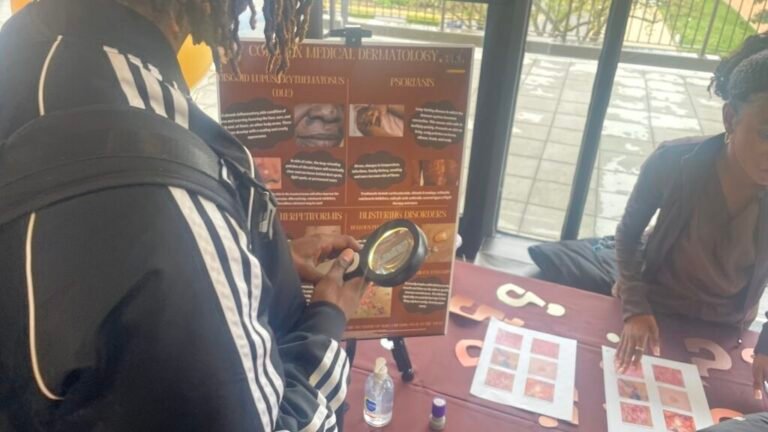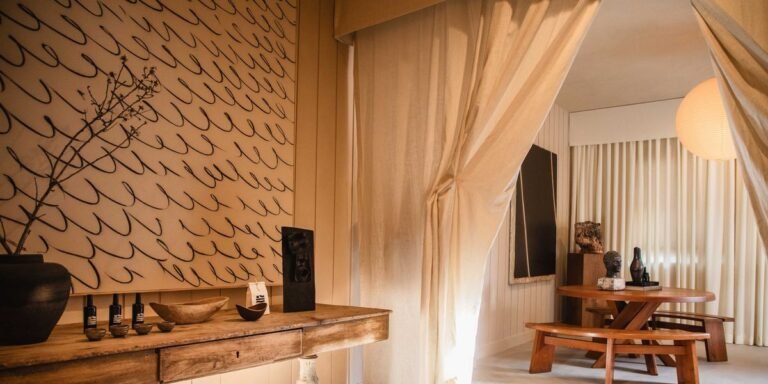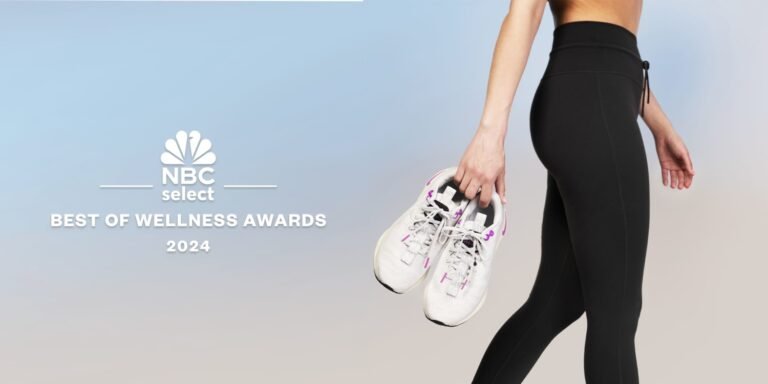How To Get Rid of Blackheads
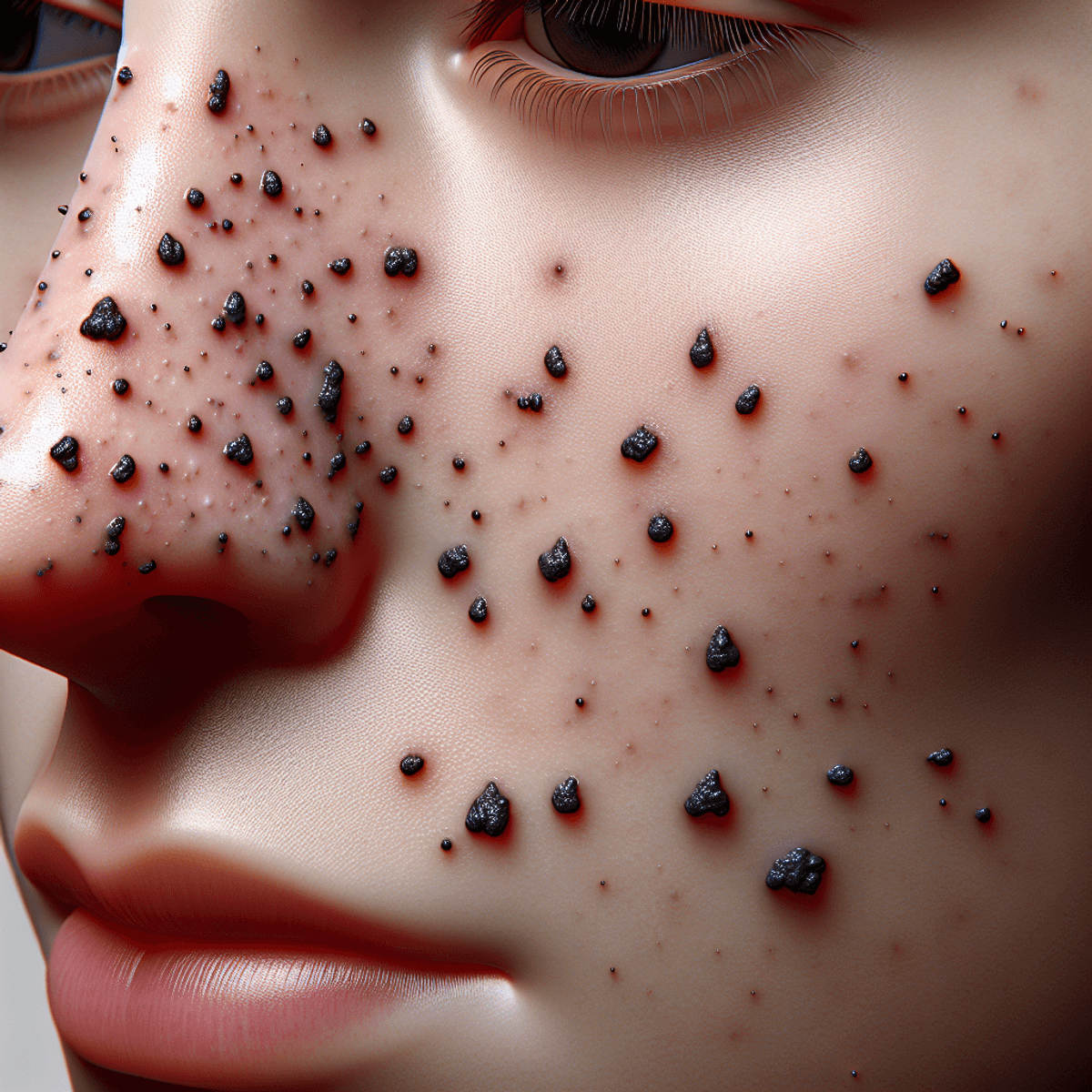
Introduction
Those tiny dark spots on your nose aren’t just a cosmetic concern – blackheads can impact your skin health and self-confidence. These stubborn blemishes appear when your pores become clogged with excess oil and dead skin cells, creating a frustrating cycle that many people struggle to break.
You’re not alone in this battle. Blackheads affect people of all ages and skin types, making them one of the most common skincare concerns. The oxidation process that turns these clogged pores dark can leave you feeling self-conscious and searching for solutions.
The good news? You can effectively tackle blackheads with the right approach. Whether you’re dealing with:
- Persistent nose blackheads
- Forehead congestion
- Chin breakouts
- Back acne
- Stubborn sebaceous filaments
This comprehensive guide will equip you with proven strategies to:
- Clear existing blackheads
- Prevent new formations
- Maintain healthy, clear skin
- Build an effective skincare routine
You’ll discover both immediate solutions and long-term prevention methods, from gentle daily cleansing techniques to professional treatments. Let’s transform your skin care approach and help you achieve the clear, confident complexion you deserve.
Understanding Blackheads
Blackheads appear as small, dark spots on your skin’s surface – but they’re quite different from other types of acne. These tiny spots form when your hair follicles become clogged with dead skin cells and excess oil (sebum). The dark appearance comes from the oxidation process when these materials are exposed to air.
Key Characteristics of Blackheads:
- Open comedones (exposed to air)
- Dark or black appearance
- Raised but not inflamed
- No pain or tenderness
- Can persist for extended periods
Many people confuse sebaceous filaments with blackheads. Sebaceous filaments are natural, gray-colored formations that help your skin’s oil flow normally. They’re most visible on your nose and can’t be permanently removed as they’re part of your skin’s structure.
Common Causes of Blackhead Formation:
- Hormonal Changes: Puberty and menstruation, pregnancy, birth control adjustments, stress-related hormonal fluctuations
- Excess Oil Production: Overactive sebaceous glands, genetics, climate and humidity, certain medications
- External Factors: Heavy or pore-clogging cosmetics, environmental pollution, sweat accumulation, touching your face frequently
Primary Locations for Blackheads:
The T-zone (nose, forehead, and chin) is particularly susceptible to blackheads due to its higher concentration of oil glands. You might notice blackheads in these specific areas:
- Nose creases and tip
- Center of forehead
- Inner cheeks
- Chin
- Around the lips
- Upper back
- Chest area
Your skin type plays a crucial role in blackhead formation. Oily and combination skin types are more prone to developing blackheads, while dry skin types might experience them less frequently. Understanding your skin type helps determine the most effective treatment approach for your specific situation.
Effective Cleansing Techniques for Blackhead Prevention
Proper facial cleansing is your first defense against stubborn blackheads. A consistent cleansing routine removes excess oil, dead skin cells, and environmental pollutants that contribute to clogged pores.
Best Practices for Effective Cleansing:
- Wash your face twice daily – morning and night
- Use lukewarm water to open up pores
- Spend at least 60 seconds massaging the cleanser into your skin
- Pay extra attention to blackhead-prone areas
- Pat dry with a clean towel
Choosing the Right Cleanser
Your choice of cleanser can greatly impact your efforts to prevent blackheads. Look for these key ingredients:
- Salicylic Acid – penetrates deep into pores
- Benzoyl Peroxide – fights bacteria
- Glycolic Acid – removes dead skin cells
- Niacinamide – regulates oil production
Cleansing Techniques for Different Areas
Face:
- Use gentle, circular motions
- Avoid harsh scrubbing
- Focus on T-zone area
Ears:
- Clean behind and inside ear folds
- Use a cotton swab with cleanser
- Rinse thoroughly
Body:
- Use body-specific cleansers
- Pay attention to areas prone to sweating
- Clean immediately after exercise
Signs Your Cleansing Routine Isn’t Working:
- Increased oil production
- Persistent blackheads
- Skin irritation or redness
- Tight, dry feeling after washing
Common Cleansing Mistakes to Avoid:
- Using hot water
- Over-washing your face
- Choosing harsh, stripping cleansers
- Skipping nighttime cleansing
- Using dirty washcloths or towels
Your skin type determines the most effective cleanser for you. Oily skin benefits from gel-based or foaming cleansers, while dry skin needs cream-based formulas. Combination skin requires balanced cleansers that won’t strip or over-hydrate different areas.
Remember to replace your cleanser if you notice any changes in texture.
Exfoliation Methods to Keep Your Pores Clear
Regular exfoliation plays a vital role in maintaining clear, blackhead-free skin. This essential skincare step removes dead skin cells and excess oil that can clog your pores and lead to stubborn blackheads.
Physical Exfoliants
- Facial scrubs with fine particles
- Cleansing brushes
- Exfoliating gloves
- Microfiber cloths
- Dermaplaning tools
Physical exfoliants work by manually removing dead skin cells through gentle friction. When using these tools, apply light pressure and move in circular motions to avoid irritation. Limit physical exfoliation to 2-3 times per week, depending on your skin’s sensitivity.
Chemical Exfoliants
- Alpha Hydroxy Acids (AHAs): Glycolic acid, Lactic acid, Mandelic acid
- Beta Hydroxy Acids (BHAs): Salicylic acid, Betaine salicylate
- Polyhydroxy Acids (PHAs): Gluconolactone, Lactobionic acid
Chemical exfoliants dissolve the bonds between dead skin cells, allowing them to shed naturally. BHAs are particularly effective for blackhead prevention as they penetrate deep into your pores. AHAs work on the skin’s surface, improving texture and tone, while PHAs offer gentle exfoliation suitable for sensitive skin.
Choosing the Right Exfoliant
Your skin type determines the most effective exfoliation method:
- Oily Skin: BHAs like salicylic acid
- Dry Skin: Gentle AHAs like lactic acid
- Sensitive Skin: PHAs or mild physical exfoliants
- Combination Skin: Alternate between chemical and physical methods
Start with once-weekly exfoliation, gradually increasing frequency based on your skin’s response. Watch for signs of over-exfoliation:
- Redness
- Irritation
- Increased sensitivity
- Tight, shiny skin
For optimal results, apply
Targeted Treatments for Existing Blackheads
Battling existing blackheads requires specific treatments designed to penetrate deep into your pores. Let’s explore the most effective solutions you can use at home.
Salicylic Acid: Your First Line of Defense
Salicylic acid stands as a powerful weapon against stubborn blackheads. This beta-hydroxy acid (BHA) works by:
- Dissolving excess oil within your pores
- Breaking down dead skin cells
- Reducing inflammation
- Preventing future blackhead formation
You’ll find salicylic acid in various concentrations, typically ranging from 0.5% to 2%. Start with a lower concentration if you have sensitive skin. Apply these products directly to affected areas after cleansing:
- Spot treatments
- Toners
- Medicated pads
- Serums
Topical Retinoids: The Game-Changer
Retinoids represent a class of vitamin A derivatives that transform your skin’s renewal process. These powerful compounds:
- Speed up cell turnover
- Prevent dead skin cells from clogging pores
- Reduce oil production
- Improve skin texture
Available options include:
- Over-the-counter retinol
- Prescription-strength tretinoin
- Adapalene (now available without prescription)
Application tips:
- Start using retinoids every third night
- Apply a pea-sized amount to your entire face
- Wait 30 minutes after washing your face
- Use sunscreen during the day
Combination Approach
Using both salicylic acid and retinoids can maximize your results. Apply salicylic acid products in the morning and retinoids at night. This strategy:
- Targets blackheads from multiple angles
- Prevents new formations
- Maintains clear pores throughout the day
Remember to patch test new products and introduce them gradually into your routine. Your skin needs time to adjust to active ingredients, particularly retinoids. If irritation occurs, reduce frequency or concentration of products.
Professional Help: When to Consider It for Stubborn Blackheads
Persistent blackheads that don’t respond to over-the-counter treatments may need professional help. Dermatologists and licensed estheticians offer specialized treatments designed to effectively tackle stubborn blackheads.
1. Professional Extraction
- Trained professionals use sterile tools to safely remove blackheads
- Reduces risk of scarring and infection
- Immediate visible results
- Recommended for deep-seated blackheads in hard-to-reach areas like ears
2. Chemical Peels
- Professional-grade solutions remove dead skin cells
- Targets multiple skin concerns simultaneously
- Available in different strengths based on needs
- Results visible after 1-3 treatments
3. Microdermabrasion
- Physical exfoliation using tiny crystals
- Removes surface-level dead skin
- Stimulates collagen production
- Ideal for blackheads on nose and cheeks
4. LED Light Therapy
- Blue light kills acne-causing bacteria
- Red light reduces inflammation
- Non-invasive treatment option
- Regular sessions needed for optimal results
These professional treatments work best as part of a comprehensive skincare routine. Many dermatologists recommend combining treatments for enhanced results – such as following extractions with a chemical peel. The cost varies by location and treatment type, but professional help proves worthwhile for severe or recurring blackhead issues.
Natural Remedies for Blackhead Removal: Do They Work?
Natural remedies offer a gentle alternative to chemical treatments for blackhead removal. Here’s what science says about popular home remedies:
1. Tea Tree Oil
- Acts as a natural antimicrobial agent
- Dilute with carrier oil (1:9 ratio) before application
- Studies show effectiveness in reducing mild acne
- Best used as a spot treatment on affected areas
2. Honey and Cinnamon Masks
- Raw honey provides antibacterial properties
- Cinnamon increases blood circulation
- Mix equal parts to create a natural paste
- Apply for 10-15 minutes twice weekly
3. DIY Sugar Scrubs
- Mix brown sugar with coconut oil
- Provides gentle physical exfoliation
- Use once weekly to avoid over-exfoliation
- Not recommended for sensitive or inflamed skin
4. Green Tea Compresses
- Rich in antioxidants and anti-inflammatory compounds
- Apply cooled green tea bags directly to affected areas
- Can help reduce oil production
- Use twice daily for best results
Important Considerations:
- Natural remedies require consistent, long-term use
- Results vary significantly between individuals
- Some ingredients may cause allergic reactions
- Patch test new remedies on a small area first
- Stop use if irritation occurs
Limitations of Natural Treatments
- Take longer to show results compared to medical treatments
- May not work for severe or deep blackheads
- Lack scientific research backing many claims
- Proper concentration and preparation crucial for effectiveness
- Best used as complementary treatments rather than sole solutions
Natural remedies work best when combined with proper skincare habits and a consistent cleansing routine. While these treatments can help with mild blackheads, stubborn cases might require additional interventions.
Long-Term Strategies to Prevent Blackhead Formation
Creating a sustainable skincare routine prevents blackheads from recurring. Your daily habits play a crucial role in maintaining clear, healthy skin across all areas of your body.
Choose Noncomedogenic Products
- Look for “noncomedogenic” labels on all skincare and makeup items
- These products are specifically formulated to avoid clogging pores
- Check ingredients lists for potentially pore-blocking substances
- Replace oil-based products with water-based alternatives
Daily Habits for Blackhead Prevention
- Change pillowcases twice weekly to prevent oil and bacteria buildup
- Keep hair clean and away from your face
- Avoid touching your face throughout the day
- Remove makeup completely before bed
- Clean phone screens regularly to prevent bacteria transfer
Area-Specific Prevention
Face and Nose
- Use oil-absorbing sheets during the day
- Apply a clay mask weekly
- Keep bangs trimmed or styled away from forehead
Back and Body
- Wear loose-fitting, breathable clothing
- Shower immediately after exercising
- Use body washes containing salicylic acid
- Exfoliate problem areas gently 2-3 times weekly
Inner Thighs
- Choose moisture-wicking fabrics
- Apply anti-chafing products
- Keep the area dry and clean
- Avoid tight-fitting clothing in hot weather
Lifestyle Adjustments
- Stay hydrated by drinking adequate water
- Maintain a balanced diet rich in vitamins A and C
- Get sufficient sleep to support skin renewal
- Manage stress through regular exercise
- Keep skin moisturized with lightweight, noncomedogenic products
Professional Maintenance
- Schedule regular facial treatments every 4-6 weeks
- Get professional skin assessments to track progress
- Update your skincare routine seasonally
- Consider monthly deep-cleansing treatments
These preventive measures create a strong foundation for maintaining clear skin. Consistency in your skincare routine helps prevent blackheads from forming across different areas of your body.
Conclusion
Getting rid of blackheads requires dedication and a well-planned skincare routine. You now have the knowledge to tackle these stubborn skin concerns through various methods:
- Regular cleansing and exfoliation
- Targeted treatments with proven ingredients
- Professional interventions when needed
- Natural remedies for gentle care
- Long-term prevention strategies
Remember that results take time, and consistency is key. Start with gentle treatments and adjust your approach based on your skin’s response. If one method doesn’t work, try another or combine different techniques for better results.
Your journey to clear, blackhead-free skin starts with small, daily actions:
- Choose the right products for your skin type
- Maintain a consistent skincare routine
- Be patient with the process
- Monitor your skin’s response to treatments
- Seek professional help when needed
Take action today by implementing these strategies into your skincare routine. Beautiful, clear skin is achievable with the right approach and dedication. Your skin deserves the best care possible – start your transformation journey now.
Ready to say goodbye to blackheads? Begin with one method and gradually incorporate others as your skin adjusts. Your path to clearer, healthier skin starts here.
FAQs (Frequently Asked Questions)
What are blackheads and how do they differ from other types of acne?
Blackheads are a type of comedonal acne formed when hair follicles become clogged with oil and dead skin cells. Unlike other forms of acne, such as pimples, blackheads remain open at the surface, which causes them to oxidize and turn dark.
What factors contribute to the formation of blackheads?
Blackhead formation can be influenced by several factors, including hormonal changes that increase oil production, excessive sebum production, and the accumulation of dead skin cells. These factors lead to clogged pores, which can result in blackheads.
How can I effectively prevent blackheads?
To prevent blackheads, it’s important to maintain a consistent skincare routine that includes gentle cleansing, regular exfoliation to remove dead skin cells, and using non-comedogenic products. Keeping your skin clean and well-hydrated can also help reduce the likelihood of clogged pores.
What are some effective treatments for existing blackheads?
Over-the-counter treatments containing salicylic acid or topical retinoids can be effective in treating existing blackheads. Salicylic acid helps to unclog pores and reduce oiliness, while retinoids promote skin cell turnover and prevent new blockages.
When should I consider professional help for stubborn blackheads?
If over-the-counter treatments are ineffective in managing your blackheads or if you have persistent issues despite a good skincare routine, it may be time to consult a dermatologist. Professional treatments like extractions or chemical peels can provide more immediate results.
Are there any natural remedies for treating blackheads?
Yes, some natural remedies may help treat blackheads. Ingredients like honey, lemon juice, or baking soda can be used as masks or scrubs to help exfoliate the skin and remove impurities. However, it’s essential to patch test these remedies first to avoid irritation.


